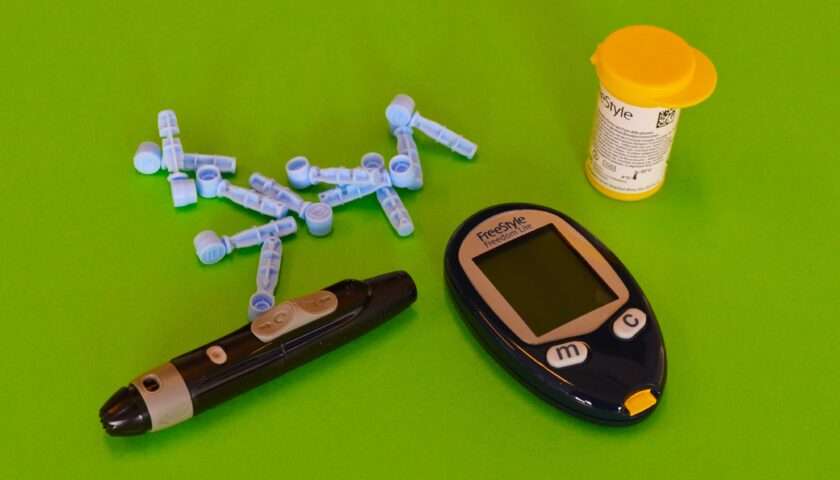In the ever-evolving landscape of medical breakthroughs, the National University of Singapore’s groundbreaking research has unveiled a magnetic dressing that promises to revolutionize diabetic wound healing.
Discover the innovative approach with ‘Magnetic Dressing Speed Up Diabetic Wound Healing.’ Explore how this cutting-edge technology is revolutionizing diabetic wound care, accelerating the healing process.
This magneto-responsive hydrogel wound dressing is not just a bandage; it’s a leap forward in regenerative medicine, incorporating advanced technology to address the complex challenges associated with diabetic wounds.
Table of Contents
This detailed exploration delves into the science behind this pioneering dressing, its potential implications, and the significance of this discovery.
Understanding Magnetic Dressing: A Marvel in Regenerative Medicine
At its core, magnetic dressing is not just a conventional wound cover; it’s a dynamic player in the complex realm of diabetic wound healing.
The dressing is a hydrogel infused with regenerative cell types, namely keratinocytes and fibroblasts. These cells play crucial roles in skin repair and the formation of connective tissue.
Traditional wound dressings have been largely passive, merely providing a protective layer without actively contributing to the intricate process of wound healing.
Diabetic wounds, notorious for their slow healing and potential complications leading to amputations, necessitate a paradigm shift in wound care.
Lead researcher Andy Tay highlights a key issue with conventional dressings: they don’t actively participate in the healing process.
Patients often require frequent dressing changes, posing not only a significant inconvenience but also a substantial cost to healthcare systems.
Recognizing these limitations, the research team set out to create an advanced dressing that not only prevents deterioration but actively accelerates wound healing.
Let’s unravel how magnetic dressing actively contributes to healing, addressing the unique challenges faced in diabetic wound care.
Key-Components of Magnetic Dressing
The success of magnetic dressing lies in its meticulous design.
Keratinocytes are essential for skin repair, and fibroblasts, crucial for connective tissue formation, work in harmony within the dressing.
These regenerative cell types set the stage for accelerated healing, combating the inherent difficulties in diabetic wound recovery.
Magneto-Responsive Technology: A Game-Changer in Wound Care
Enter the magneto-responsive feature – a game-changer in diabetic wound care.
The hydrogel incorporates minuscule magnetic particles strategically positioned to respond to an external magnetic field.
When activated, these particles induce mechanical stresses within the gel, triggering a response from encapsulated cells.
This unique approach mimics the natural mechanical deformation skin cells experience during movement, fostering cell growth and amplifying the regenerative potential of the dressing.
This breakthrough not only expedites wound healing but also introduces a novel approach to regenerative medicine.
This innovation aligns with the transformative power it brings to diabetic wound care.
The integration of magneto-responsiveness showcases the brilliance of the scientific minds behind this discovery.
It also underlines the potential for technology to actively contribute to healthcare solutions.

Addressing Mobility Limitations in Diabetic Patients
Diabetic patients often face reduced mobility, a critical factor in impeding natural movement-induced stimulation essential for effective wound healing.
Recognizing this, the research team ingeniously embedded a mechanical deformation process within the hydrogel.
Exposing the dressing to a magnetic field induces controlled mechanical stress on the cells, replicating the beneficial effects of movement even in immobile patients.
This aspect of the dressing resonates deeply with the challenges faced by diabetic patients.
Limited mobility not only hampers the body’s natural healing processes but also contributes to the complexity of treating wounds in this demographic.
The dressing’s ability to simulate mechanical stress in a controlled manner represents a breakthrough in addressing a fundamental barrier to effective wound healing.
Results Beyond Expectations: Accelerated Healing and Collagen Production
Early tests of this magnetic/mechanical stimulation have yielded extraordinary results, providing a glimpse into the future of wound care.
Cell growth rates surged by an impressive 240%, and collagen production, a key component in tissue regeneration, doubled.
It not only expedites the healing of diabetic wounds but also contributes to overall wound health, significantly reducing the likelihood of recurrence.
As we navigate the intricacies of this revolutionary discovery, it’s essential to consider the broader implications.
See also Artificial Intelligence in Medical Diagnosis
The accelerated cell growth and increased collagen production showcased in early tests signify more than just faster wound healing.
They paint a picture of a potential paradigm shift in how we approach wound care, particularly in conditions where conventional methods have fallen short.
The Significance of Magnetic Dressing in Diabetic Wound Care
From a medical standpoint, magnetic dressing signifies a paradigm shift in diabetic wound care.
Its ability to actively participate in the healing process coupled with addressing mobility limitations, sets it apart as a holistic solution.
The dressing doesn’t just treat wounds; it fosters an environment that promotes overall wound health, reducing the likelihood of recurrence.
This innovation resonates with medical professionals and is crucial for widespread understanding in the general public and acceptance of the dressing’s potential.
Conclusion: A New Era in Diabetic Wound Care
In conclusion, magnetic dressing emerges as a beacon of hope in the realm of diabetic wound care.
The integration of regenerative cell types, magneto-responsive technology, and a holistic approach to healing represents a significant leap forward.
It isn’t just a dressing; it’s a testament to the possibilities that lie at the intersection of innovation and regenerative medicine.
As we look ahead, the journey with magnetic dressing promises not only accelerated healing for diabetic wounds but also a transformative impact on the landscape of regenerative medicine.
The future of wound care is magnetic, and the possibilities are limitless.



